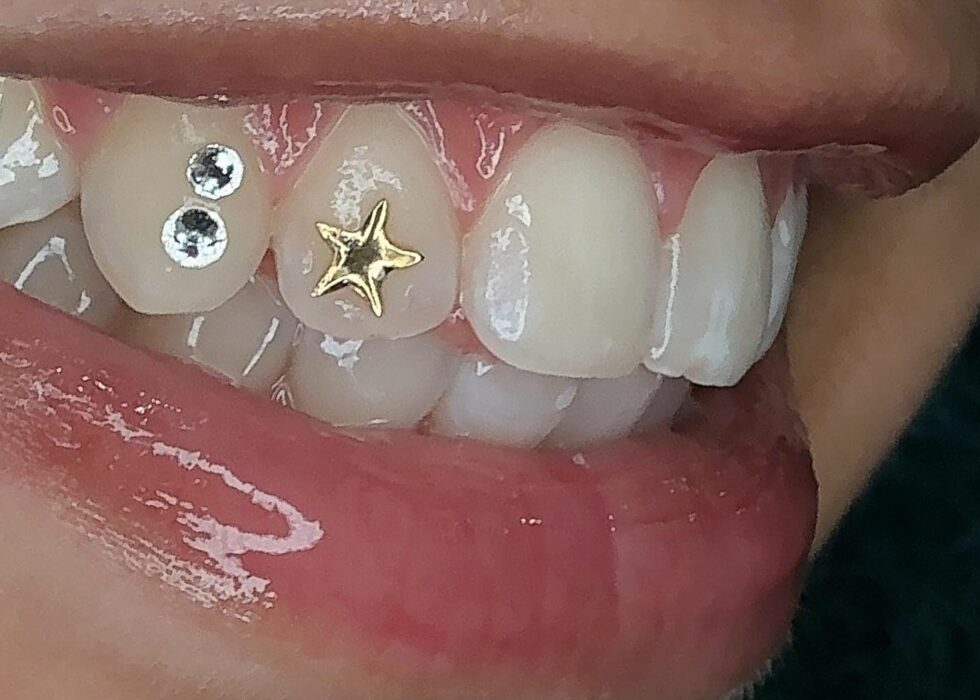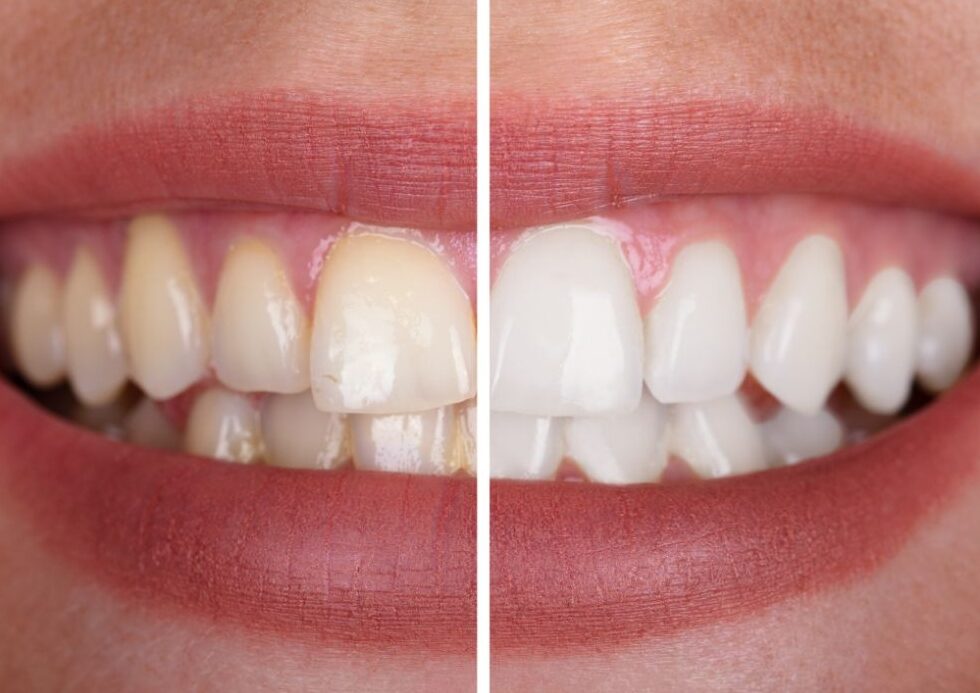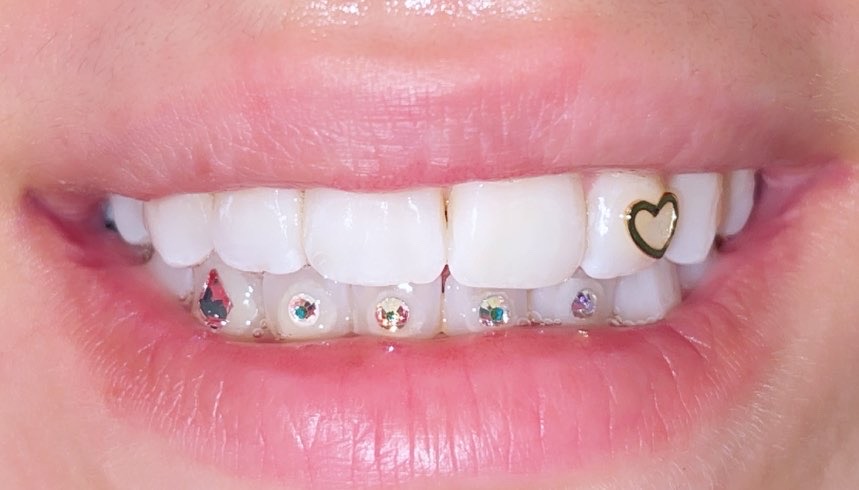Can You Use Tooth Gems Without Harming Your Teeth?
Yes, you can. They’re placed with materials orthodontists, and dentists use! The tooth will remain healthy if the client is brushing and flossing safely around gem(s). Tooth gems are a new and popular trend. In recent years, these gems have been used in oral care products to make teeth whiter and cleaner. In addition, people now use them for aesthetic purposes, including crystals, gold, and silver in their tooth gem design.
What are tooth gems?
Tooth Gems are an adornment applied by a professional for the best results. All tooth gems are not equal, however. Some take a longer time to dry, but this is why you should always research a trusted professional in your area. Diamond and crystal gems are more expensive than other gems but are also the most durable.
Tooth gems have become a popular choice among dental clients who want to make their teeth shine with a whiter color. The gemstones are usually placed on the front four teeth, making them visible when talking or smiling. With over 18 different colors to choose from, clients can match their style and look.
Ever since celebrities like Kylie Jenner and Khloe Kardashian started sporting the trend, there’s been a ton of confusion as to whether or not you can use tooth gems without harming your teeth. Everyone is searching for the answer to this burning question. If you’re wondering if you can use tooth gems without damaging your teeth, you’ve come to the right place! Here are six answers to your most pressing questions.
Are tooth gems bad for your teeth?
No, they are not! However, they are great for cleaning and removing plaque buildup before it gets too large or inflamed – which will help protect your gums and reduce the risk of gum disease.
Is it okay to use tooth gems when you have braces?
Yes, they are, as long as you have consulted your orthodontist beforehand and you’re able to floss and brush around with no issues. Braces can help improve your oral health, but to do so effectively, you must floss your teeth regularly. In addition, many other flossing tools are available for people with braces, including Orapup and floss threaders.
Are tooth gems recommended for kids?
We recommend tooth gems for adults only. However, young adults have also taken an interest in this trend because of celebrities and influencers.
How do tooth gems work?
Tooth Gems are crystals, diamonds, or gold glued onto the surface of a tooth with a special adhesive. They can last up to a month or longer, depending on how well they are applied.
Can you use tooth gems on dentures?
Yes, but it is best to consult your dentist before doing so. Your dentist can determine whether or not your dentures are safe enough to use tooth gems on them. For example, if your denture is made of a material that tooth gems can easily damage, it would be best to avoid using them.
They can still damage your teeth if they’re not used carefully. So always make sure to use the gemstones properly and follow instructions when administering them.
How to Prepare for your Teeth Whitening Appointment:
Please eat, brush and floss before your whitening appointment.
You will not be able to eat or drink (besides water) for at least 2 hours during your session.
Caution: any sores or cuts in your mouth will cause discomfort. Best also suggested bringing Vaseline or chapstick!
What to expect after your teeth whitening appointment:
Wait at least 2 hours to eat or drink. (Besides water)
Avoid foods that are likely to cause stains. Such as Coffee, Alcohol, Fruits, Soda, tomato sauces, Smoke, and Foods with heavy colors.
White spots on teeth may be visible in certain areas. Calcium deposits or porous teeth typically cause these. These will normally disappear within 24 hours.
Should you have any cuts on your gums, you may see some white spots. These will also disappear within hours, as they are sensitive gum reactions. Touch-up treatments are recommended every 3-6 months (depending on sensitivity)!
How to Prepare for your Tooth gem appointment:
Please Eat, Brush and Floss before your tooth gem appointment as it may cause your tooth gem not to last as long if there is tartar or build-up on your tooth’s surface.
What to expect after your tooth gem appointment:
Wait at least 1 hour to eat!
How to Care for your tooth gem:
Do not bite into apples or hard fruit. The same applies to burgers, meat, chicken, bones, etc.
Brush and floss gently around your gems!




